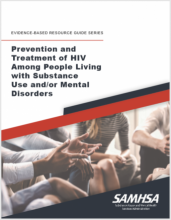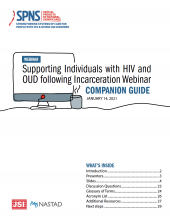
This resource describes how state health departments and other public health organizations can partner with people with HIV and/or who use(d) drugs in programmatic and policy making processes and evaluation.



This resource describes how state health departments and other public health organizations can partner with people with HIV and/or who use(d) drugs in programmatic and policy making processes and evaluation.
Language is foundational to how we understand and interact with ourselves and others. Unclear language can lead to confusion and inefficiencies, while stigmatizing and prejudicial language leads to harmful practices and dehumanizes people.
Individuals who have HIV who also use drugs experience increased age-matched morbidity and mortality in comparison with those with HIV who do not use drugs.
For Boston Health Care for the Homeless nurse Megan Sonderegger, providing client-centered care means literally meeting her clients where they are.
There are so many factors that impact adherence and health outcomes. During this Connecting Care podcast, Drs. Alex Walley, Jessica Taylor, and Sim Kimmel discuss HIV prevention and treatment among people who inject drugs.
This technical package, a collaborative effort between CDC and NASTAD, provides a broad framework as well as evidence-informed strategies and approaches to support the planning, design, implementation, and sustainability of new and existing syringe services programs (SSPs).
This virtual session summary describes key takeaways from the August 2020 Let's Talk about SSPs as Essential Services conversation.